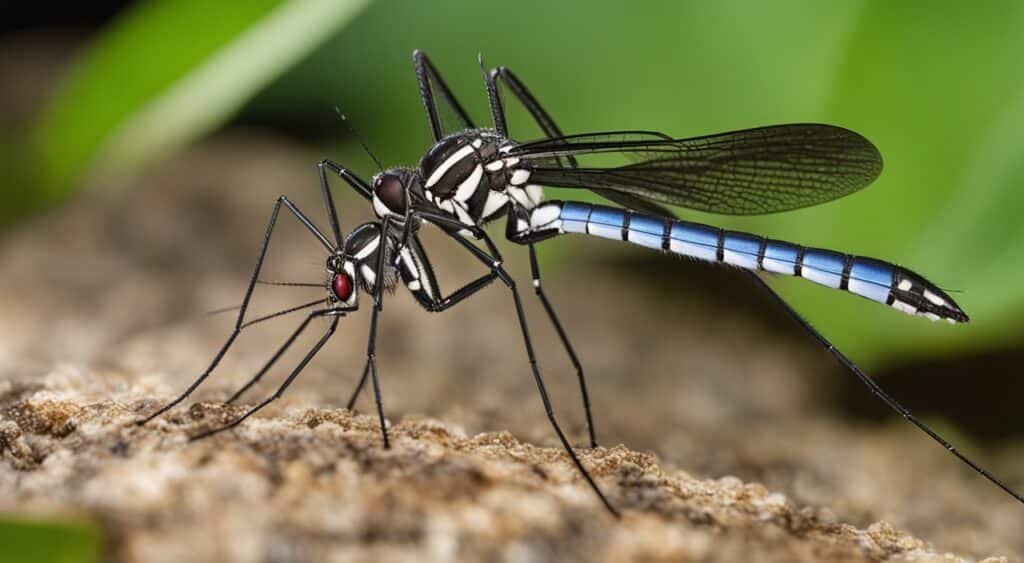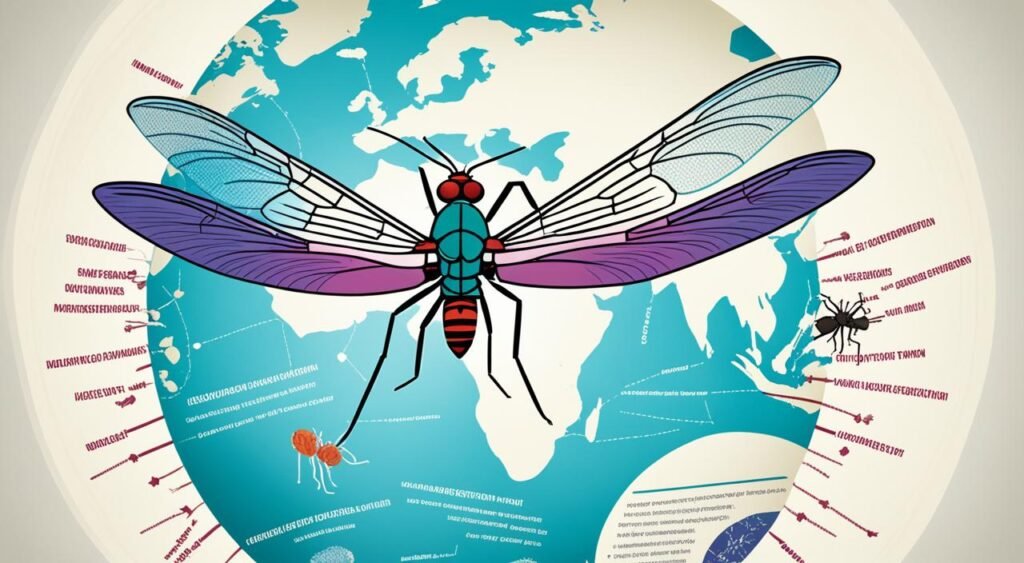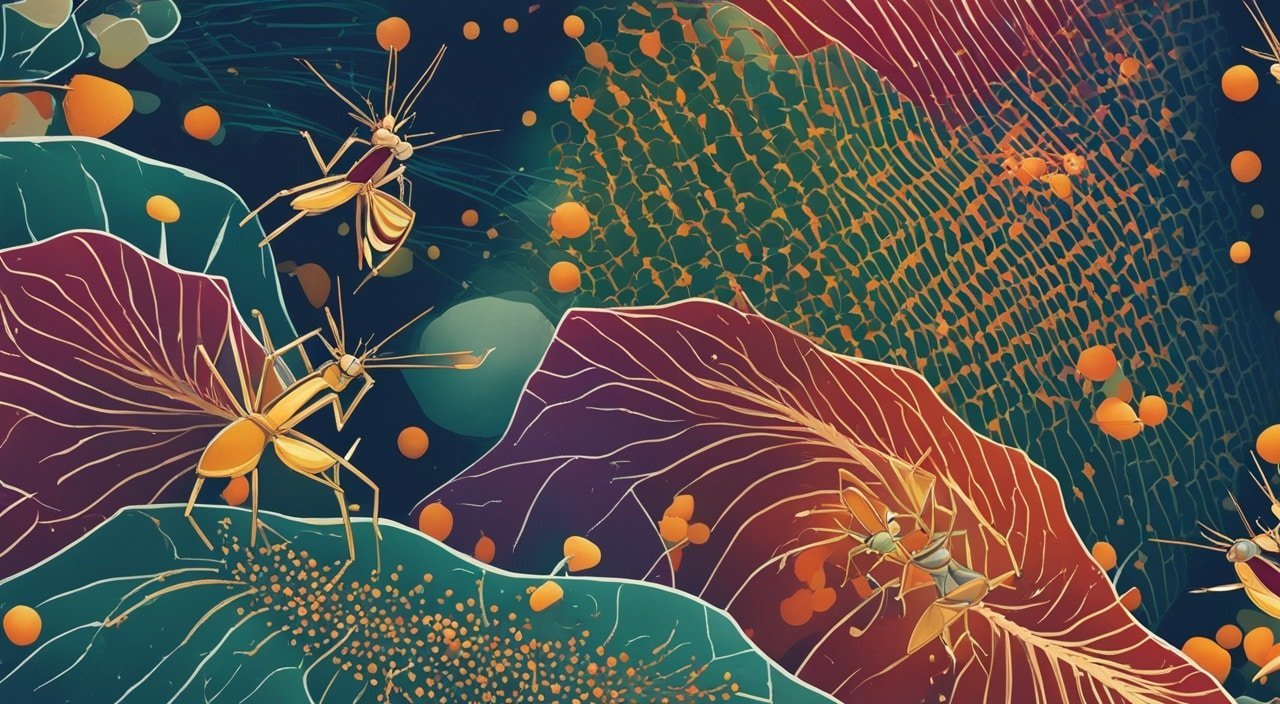Chikungunya is a viral illness spread by infected mosquitoes, mainly Aedes aegypti and Aedes albopictus. It can also spread by blood or from mother to baby during birth. These ways of getting the virus are not very common. People are most at risk of catching it when the illness is just starting.
Key Takeaways
- Chikungunya is primarily transmitted through the bite of infected Aedes mosquitoes.
- The virus can also be transmitted through bloodborne, intrapartum, and in utero routes, but these are rare.
- During outbreaks, humans are the primary hosts of the chikungunya virus.
- The risk of transmission is highest when a patient is viremic (presence of virus in the blood) during the first week of illness.
- Mosquito-borne transmission is the most common mode of chikungunya virus spread.
What Is Chikungunya?
Chikungunya is a virus that causes a sudden fever and severe joint pain. It’s in the Alphavirus family, specifically the Togaviridae group. The chikungunya definition covers its symptoms and possible outcomes.
Definition and Overview
First found in Tanzania in the 1950s, it’s named after a word meaning “to become contorted.” This fits the intense joint pain it causes. Mosquitoes, especially Aedes aegypti and Aedes albopictus, spread it to people.
Symptoms and Complications
High fever is a key chikungunya symptom, sometimes over 104°F (40°C). It also brings serious joint pain in the hands, wrists, ankles, and knees. You might have muscle aches, a headache, feel sick, tired, and see a chikungunya rash. Most recover within a month or less.
Yet, some face longer joint pain, eye problems, or nerve issues, especially kids and the elderly.
| Chikungunya Symptoms | Chikungunya Complications |
|---|---|
|
|
“The most common chikungunya symptoms include an abrupt onset of high fever, often reaching temperatures of 104°F (40°C) or higher.”
Chikungunya Virus

Virus Classification and Structure
The chikungunya virus is listed among the alphavirus group within the Togaviridae family. Its close relatives include the eastern equine encephalitis virus, Mayaro virus, and the western equine encephalitis virus. The virus’s particles are covered in a lipid layer, shaped like a 60–70 nanometers icosahedral capsid.
Being an alphavirus, the chikungunya virus shares features with other single-stranded, positive-sense RNA viruses. It has a genome size of about 11.8 kilobases. This contains four proteins that help with replication and five structural ones that allow the virus to enter host cells.
The virus’s structure stands out due to its icosahedral symmetry and the lipid envelope it has. This envelope comes from the host cell during budding, and it carries the proteins needed for cell entry. Such a structure is crucial for understanding how the virus interacts with its environment.
The chikungunya virus maintains a mostly uniform genetic makeup around the world. This stable genome is vital for developing vaccines and tests against this virus.
“The chikungunya virus is a major health threat, especially in areas where Aedes aegypti and Aedes albopictus mosquitoes live.”
Knowing about the chikungunya virus‘s makeup is key to fighting the disease. This knowledge helps in creating medicines and vaccines that are specific to the virus.
Modes of Transmission
The chikungunya virus mainly spreads through mosquito bites. Chikungunya mosquito transmission is the top way people get the virus. Mosquitoes catch the virus from someone’s blood and then pass it to others when they bite them.
Mosquito-Borne Transmission
The chikungunya virus cycle starts with a mosquito biting an infected person. It takes the virus in. Then, the virus grows inside the mosquito and moves into humans when the mosquito feeds again. Aedes mosquitoes chikungunya transmission because they are good at picking up and giving the virus.
Other Transmission Routes
Chikungunya mosquito transmission is the main way the virus spreads, but it’s not the only way. People who work with infected blood or fluids might get the virus. There have been a few cases where a mother passed the virus to her baby before or during birth. But, there’s no proof yet that the virus spreads through breastfeeding.
| Transmission Route | Frequency | Description |
|---|---|---|
| Mosquito-Borne | Predominant | Transmitted by infected Aedes mosquitoes during blood meals |
| Bloodborne | Rare | Occurs among laboratory workers and healthcare providers handling infected blood |
| In Utero | Rare | Documented cases of transmission from infected mother to fetus during pregnancy |
| Intrapartum | Rare | Reported cases of transmission during childbirth from infected mother to newborn |
Healthcare workers and public health experts use this info to stop the virus from spreading. They take steps to prevent chikungunya and keep at-risk people safe.
Chikungunya Outbreaks and Distribution

The chikungunya virus was first found in Tanzania in 1952. It has spread to many countries since then. Recent years have seen more chikungunya outbreaks, which are spreading wider than before.
Today, the chikungunya distribution has grown a lot. Places with mosquitoes like Aedes aegypti or Aedes albopictus now have the virus from local transmissions. This includes spots in Asia and Africa, along with new outbreaks in the Americas and some parts of Europe.
Chikungunya has had a big global impact. It has caused large outbreaks in places like India, Indonesia, and Africa. The Caribbean and parts of South and Central America also face ongoing problems due to the virus.
In the past, chikungunya in asia and chikungunya in africa had more outbreaks. This was because the types of mosquitoes that carry the virus were common there. But, it shows the virus can adapt and spread to new places quickly.
| Region | Chikungunya Outbreaks | Endemic Areas |
|---|---|---|
| Asia | India, Indonesia, Southeast Asia | India, Southeast Asia |
| Africa | Several countries in sub-Saharan Africa | Central and East Africa |
| Americas | Caribbean, Central America, South America | Parts of the Caribbean and South America |
| Europe | Sporadic outbreaks in Mediterranean regions | None |
The table above shows the chikungunya outbreaks and chikungunya endemic areas in different parts of the world. It reveals the virus’s wide reach and the health challenges it brings.
“Chikungunya has demonstrated an alarming ability to spread rapidly and cause large-scale outbreaks, underscoring the need for comprehensive surveillance and effective control measures.”
Diagnosis and Testing
Getting the right diagnosis for chikungunya is vital for treating it well. Doctors usually run tests in a lab to see if the virus is in your body or if your immune system is fighting it.
Laboratory Tests for Chikungunya
Doctors use two main tests for chikungunya testing:
- Reverse Transcriptase–Polymerase Chain Reaction (RT-PCR): A direct test that finds the virus in blood within a week of getting sick. It’s the best we have for chikungunya laboratory tests.
- Antibody Tests: These tests show if your immune system is battling the chikungunya virus. They work about a week after you get sick until two months later.
Which test is used depends on how long you’ve been sick and what tests your lab can do. Finding out early is key to stopping the virus from spreading.
| Test | Timing | Advantages | Limitations |
|---|---|---|---|
| RT-PCR | First week of illness | Great for checking if you’re sick right now | Needs special equipment and people who know how to use it |
| Antibody Tests | After first week of illness | Shows if you’ve had the virus before | Can’t tell the difference between similar viruses |
Getting the right diagnosis and doing tests on time are very important for treating chikungunya. Doctors should know which tests to use, so they find the virus quickly and accurately.
Treatment and Preventive Measures

There’s no specific drug to fight the chikungunya virus. But, managing its symptoms is crucial. This includes reducing fever and pain. It’s also vital to prevent spread and complications.
Symptomatic Treatment
The main aim in chikungunya care is to ease fever, joint pain, and more symptoms. You can take medications like acetaminophen for fever and paracetamol for pain. For severe cases, nonsteroidal anti-inflammatory drugs (NSAIDs) might be used.
Getting lots of rest and drinking fluids is important. This helps the body heal. Healthcare providers always suggest these.
Preventive Strategies
To fight chikungunya, avoid mosquito bites. This virus mostly spreads through certain mosquitoes. Effective steps to prevent mosquito bites include:
- Using insect repellent with DEET, picaridin, or IR3535
- Wearing clothing that covers your arms, legs, and feet
- Making sure your home is mosquito-free by using screens
- Getting rid of any standing water where mosquitoes can breed
Though there’s no vaccine yet, many candidates are in progress. Researchers are working hard to develop a vaccine that will prevent chikungunya in the future.
| Chikungunya Treatment | Chikungunya Prevention |
|---|---|
| Using one of Acetaminophen or paracetamol for fever and pain relief | Using a repellent with DEET, picaridin, or IR3535 |
| NSAIDs to manage joint pain and inflammation | Wearing clothes to protect from bites |
| Getting enough rest and water for healing | Keeping your living area safe from mosquitoes |
| There isn’t a specific antiviral drug for this virus | Removing any standing water to stop breeding |
No commercial vaccine exists, so avoiding mosquito bites is key. By treating symptoms and preventing bites, you can help your recovery and lower your risk of severe issues.
Chikungunya and Mosquito Vectors

Chikungunya virus is spread by two types of mosquitoes – Aedes aegypti and Aedes albopictus. These mosquitoes can also carry dengue, Zika, and other viruses. They are often called the “chikungunya mosquito vectors.”
Also Read: Top 10 Surgical Hospitals For Precision In The World
Aedes Aegypti and Aedes Albopictus
The Aedes aegypti and Aedes albopictus mosquitoes live in warm areas worldwide. They like to bite during the day and lay eggs in standing water. This makes them a big problem in both cities and countryside.
It’s key to control these mosquitoes to stop chikungunya. Methods include:
- Get rid of standing water to stop them breeding
- Use insecticides to kill them
- Teach people to use bug spray and cover up
- Run mosquito control plans in areas with the disease
Learning about chikungunya mosquito vectors helps experts fight the disease better. By focusing on Aedes aegypti and Aedes albopictus, they can protect more people.
“Controlling mosquito vectors is crucial for preventing and containing chikungunya outbreaks.”
Global Impact and Public Health Concerns

Chikungunya is a viral disease spread by mosquitoes, affecting more than 110 countries. It poses a big problem for public health, especially where Aedes mosquitoes live. Diagnosing chikungunya accurately is hard, leading to possible underreporting. The symptoms mimic other viral infections, which makes it hard to know without lab tests. This underreporting makes it tough to understand how much of an issue it really is. It also makes using the right measures and resources harder. Chikungunya could lead to more outbreaks, especially where mosquitoes are common. Its risks are higher for older people and kids, who might face ongoing joint pain. With no specific treatment, the disease is a growing worry worldwide. Efforts focus on improving how we track, diagnose, and control the disease. Raising awareness about the illness and how to stop its spread is also key.
| Chikungunya Endemic Areas | Chikungunya Epidemic Risk Groups |
|---|---|
|
|
With chikungunya spreading, ongoing health efforts are crucial.
This includes tackling difficulties and boosting preparation.
“Chikungunya is a rapidly emerging global health threat that requires coordinated and sustained public health action to combat its spread and mitigate its impact.”
Conclusion
Chikungunya is a dangerous viral sickness spread by infected mosquitoes. It often causes high fever and painful joints. In some cases, it can be more severe, especially for those who are more at risk. Stopping the spread of the virus is important. We must keep working on finding ways to treat and prevent it to help everyone deal with this threat.
We learned a lot in this article about chikungunya. We know how it spreads and what we can do to fight it. By teaching people about it and how to prevent it, we can make a big difference for everyone.
To sum up, chikungunya is a big worry, but we’re not helpless. More research, talking about it, and working together are key. With these efforts, we aim to lessen the impact of this virus and protect health everywhere.
FAQs
What is chikungunya?
Chikungunya is a viral illness spread by certain mosquitoes to humans. These mosquitoes are mainly Aedes aegypti and Aedes albopictus. It brings a quick start of fever and harsh joint pain.
How is chikungunya transmitted?
The Chikungunya virus spreads mainly through mosquito bites. The bites are from infected Aedes aegypti and Aedes albopictus mosquitoes. It can also spread through blood, during birth, or from mother to child, but this occurs rarely.
What are the symptoms of chikungunya?
Chikungunya shows itself through fever, intense joint pain, muscle aches, and headache. Other signs include nausea, tiredness, and a rash. This illness can cause pain in the joints for months or years, especially in older adults and kids.
What is the chikungunya virus?
The chikungunya virus is an alphavirus. It’s from the same family as other serious diseases like eastern equine encephalitis virus. Mayaro virus, and western equine encephalitis virus are other examples.
How is chikungunya diagnosed?
A doctor can find the Chikungunya virus in blood taken within the first week of symptoms. They use a method called reverse transcriptase–polymerase chain reaction (RT–PCR). Antibodies in the blood, showing the body’s reaction to the virus, can be found after the first week.
How is chikungunya treated?
Currently, there is no specific drug to fight off this virus. Doctors handle the symptoms, like the fever and joint pain, using medicine you can buy without a prescription. Acetaminophen or paracetamol is often recommended.
How can chikungunya be prevented?
Stopping mosquito bites is the key to avoiding chikungunya. You can do this by using insect repellent and wearing clothes that cover your skin. Make sure your home is protected with window screens. Although scientists are working on vaccines for chikungunya, none are available yet.
What are the mosquito vectors for chikungunya?
The Aedes aegypti and Aedes albopictus mosquitoes carry the chikungunya virus. They also spread dengue and Zika. These mosquitoes live in warm areas and are active during the day.
What is the global impact of chikungunya?
Chikungunya has caused outbreaks in more than 110 countries. These include places in Asia, Africa, Europe, and the Americas. The virus is still a big concern in health, especially where Aedes mosquitoes are common.
Source Links
- https://www.who.int/news-room/fact-sheets/detail/chikungunya
- https://www.cdc.gov/chikungunya/php/transmission/index.html
- https://www.paho.org/en/topics/chikungunya





